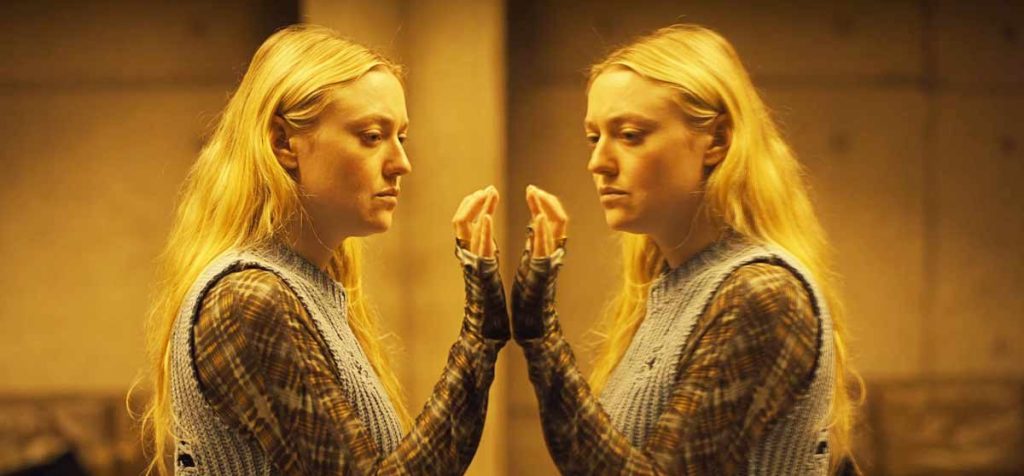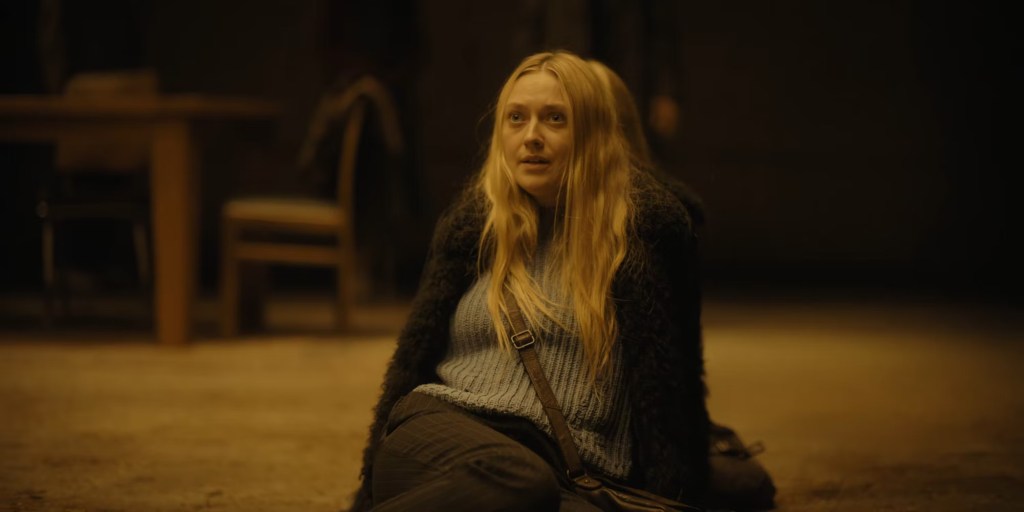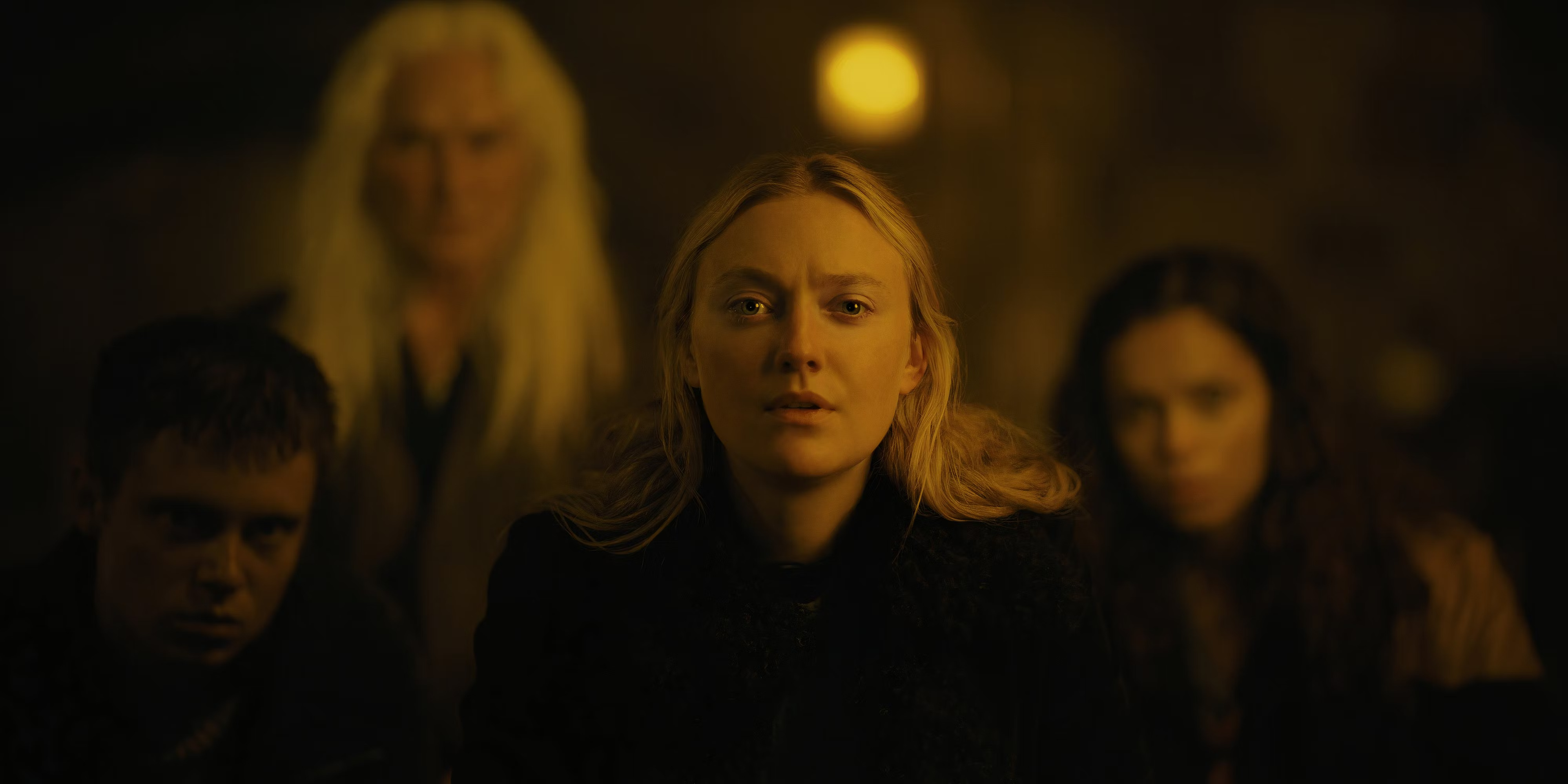In her directorial debut, ‘The Watchers,’ Ishana Night Shyamalan gave us a horror film wrapped in myth and isolation, bound to a dark sanctuary in the woods. It follows a 28-year-old artist, Mina, who lives with her pet parrot in her home in western Ireland. After a night at a pub, Mina collects her parrot and heads home. On her way back, her car shuts down while passing through a disconcerting section of a densely forested road. Unable to gain any bearings on her location, Mina comes upon a mysterious cabin with a voice urging her to step in. Once inside, her life is turned upside down when she realizes the nature of what is pulling people to the cabin and keeps them stranded there forever.
Diving into a narrative brimming with suspense, ‘The Watchers’ is an unnerving exploration of folklore and mythologies. The Dakota Fanning starrer unpeels its premise of a cabin in the woods into something unexpected and twisted as the people within progressively lose their sanity. With its voyeuristic premise and a descent into the world of ancient fairy tales and demented legends, the credentials of this gripping supernatural mystery provoke its viewers to question the veracity of its narrative and ponder whether it’s based on a true story involving folk tales and superstition.
Exploring the Literary Roots of The Watchers
‘The Watchers’ is an adaptation of A.M. Shine’s 2022 horror novel of the same name. Although Ishana Night Shyamalan developed the book into a screenplay, the essence of the story remains tied to the one depicted in Shine’s pages. The writer grew up in the rural west of Ireland, the same area Mina hails from in the movie and the book. Consequently, he was exposed to numerous mythologies and superstitious accounts attached to every piece of rock, tree, or woodland element. This became the basis for informing the fairytale-like quality of the film’s premise. In the isolation of the woods, all kinds of nightmares seem plausibly attached to superstitious beliefs existing within people.

Shine told HorrorDNA that myths were just an ordinary part of his childhood and personified how the rural and natural worlds converged into one. “In the village where I grew up, there was a massive rock in a field as you drove into it,” he said. “Apparently, this was once a witch who, for reasons lost to time, was turned to stone. When driving past it at night there was a chance you’d catch sight of her in the backseat. A brother of mine once said that he’d felt the weight of the witch on the back of his bicycle, as if she were hitching a ride into town.” While not directly attached to the narrative, these myths and beliefs emphasize the oppressive sense of dread he wanted to exhibit within the story.
As an exercise in distinguishing himself from other horror writers, Shine also believes in finding unexpected twists or subversive elements within familiar genre tropes. The cabin where Mina takes refuge after getting stranded in the woods may seem reminiscent of other “cabin in the woods” stories, but the difference in ‘The Watchers’ is in the cabin’s construction. While most cabins are built out of wood, the one in Shine’s narrative is made of concrete and glass, a small but substantial change that immerses the audience into the reality of Mina’s circumstance, as it is something unseen before. These subversion tactics are followed throughout the narrative.
How the Book Relates to the Movie
When Ishana Night Shyamalan took the responsibility of adapting the book into her screenplay, the central essence of the narrative had to be maintained while also conforming to the specific needs of the film medium. The writer-director was very aware of the Irish mythologies influencing the story. So, she kept a close parallel to the novel while also extracting the most out of the western Ireland forests and the ancient legends they hold. However, the film was structured to adhere to her principles as well. The idea was to keep the viewers in a perpetually uneased state at all times, which meant showing restraint on visualizing certain horror elements.

“I think where this movie sits… it’s a suspense movie. It’s sort of about the expectation of being afraid. I really enjoy that type of horror,” Shyamalan told Novastream. She likened her film’s disturbing and subterranean tone to movies like the 2013 sci-fi ‘Under the Skin‘ and the 2014 thriller ‘It Follows.’ Both films are understated in how they approach fear and its slow crawl into the viewer’s psyche. “You’re kind of scared and uncomfortable, and you don’t really know why!” she continued. “That to me, that feeling of anxiety, that’s what I’m drawn to more than the heavy-handed stuff. I think it’s sort of the way I experience fear, for sure.”
There were more specific inspirations, like the 1995 French film ‘La Haine!’, in the construction of certain shots, such as one involving bathroom sets. While not providing an overarching impact on the narrative, these influences were also essential in embodying a surrealness within the film. With a slew of tricks and a foreboding atmosphere pervading ‘The Watchers,’ the film attempts to ground its viewers while also depicting a fanciful tale of mysterious cabins in the woods and unseen creatures with voyeurist tendencies. It’s all part of the framework of building a plausible horror film about being stranded in a bleak forest with no way out.
Read more: Best Home Invasion Horror Movies on Netflix


You must be logged in to post a comment.